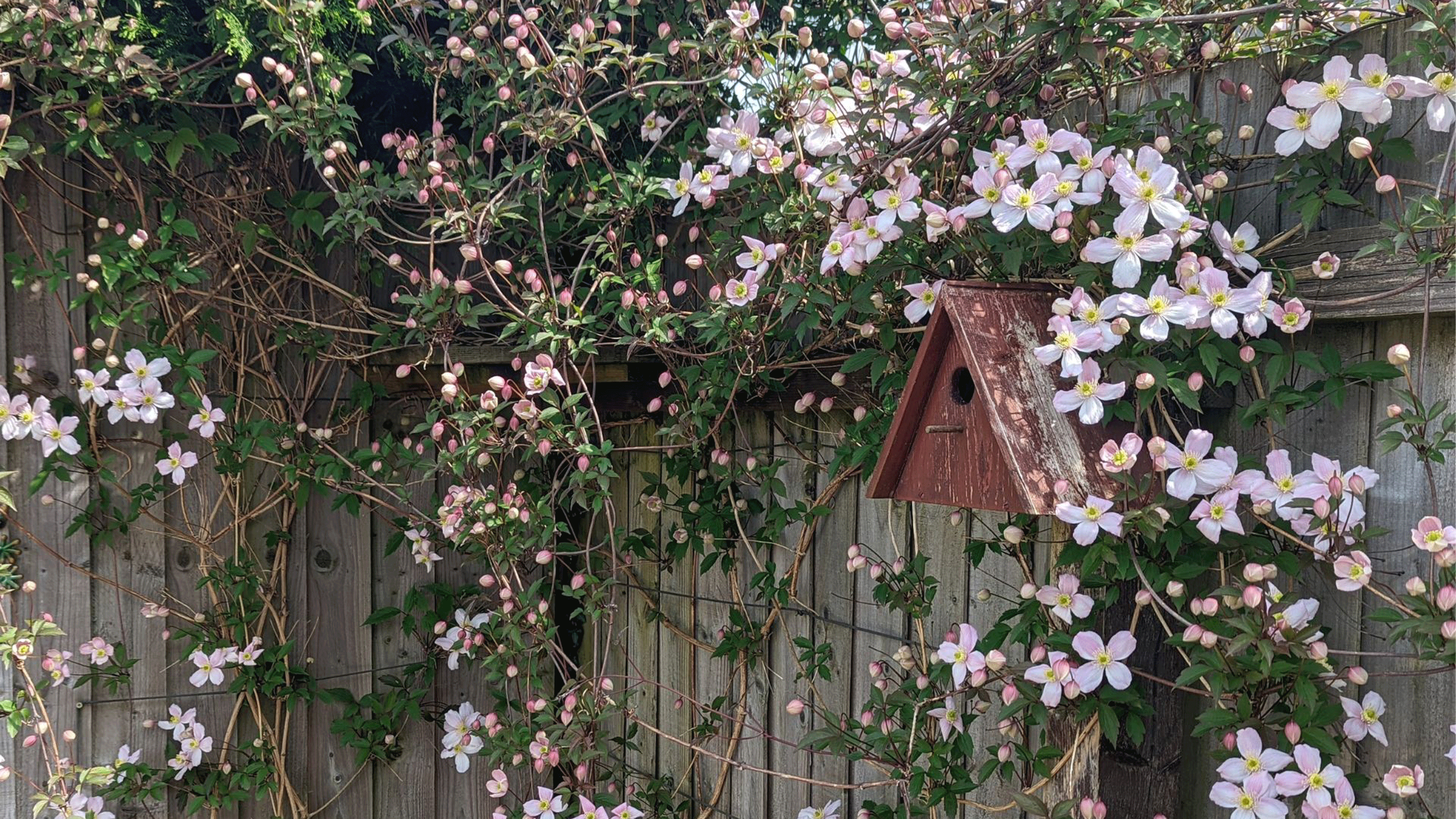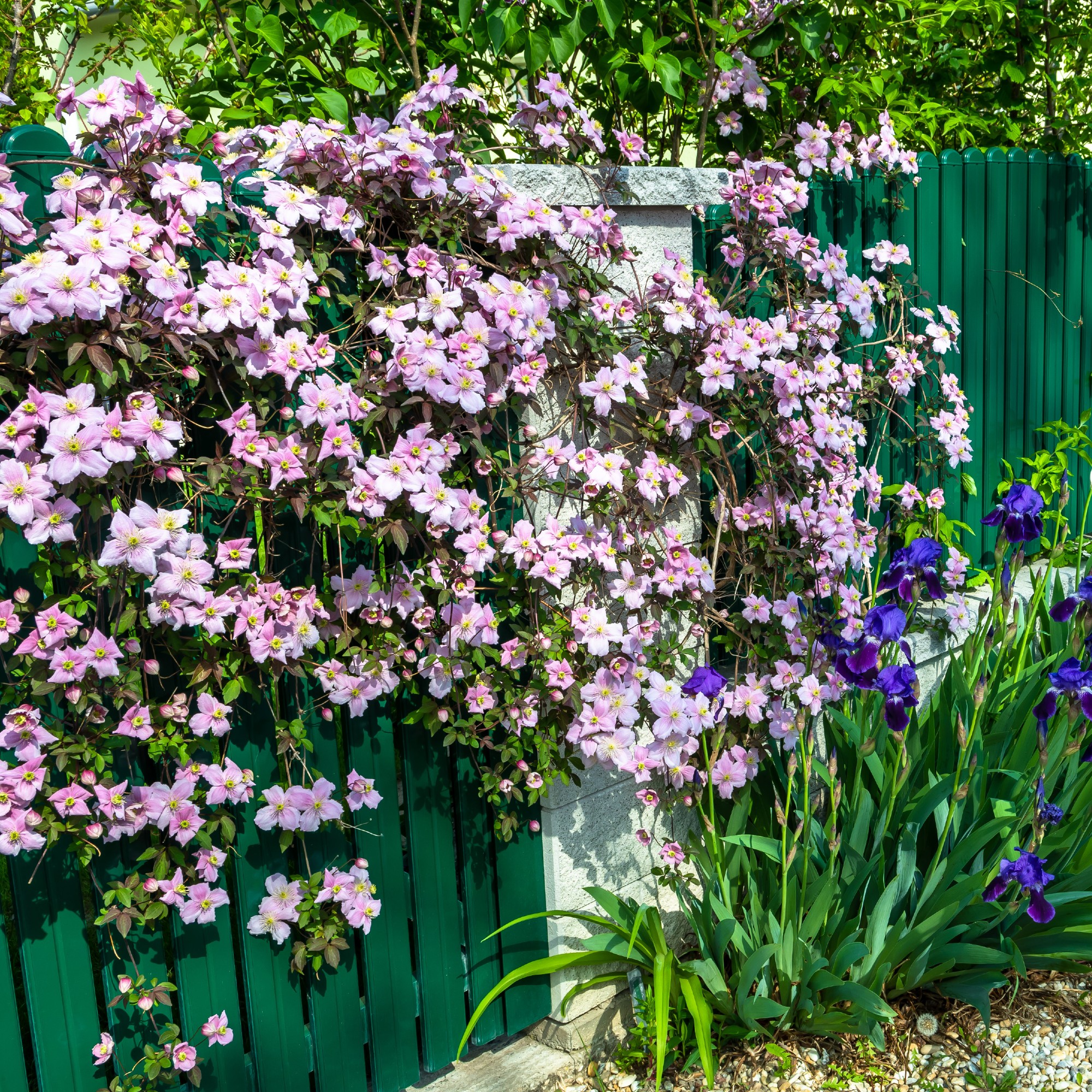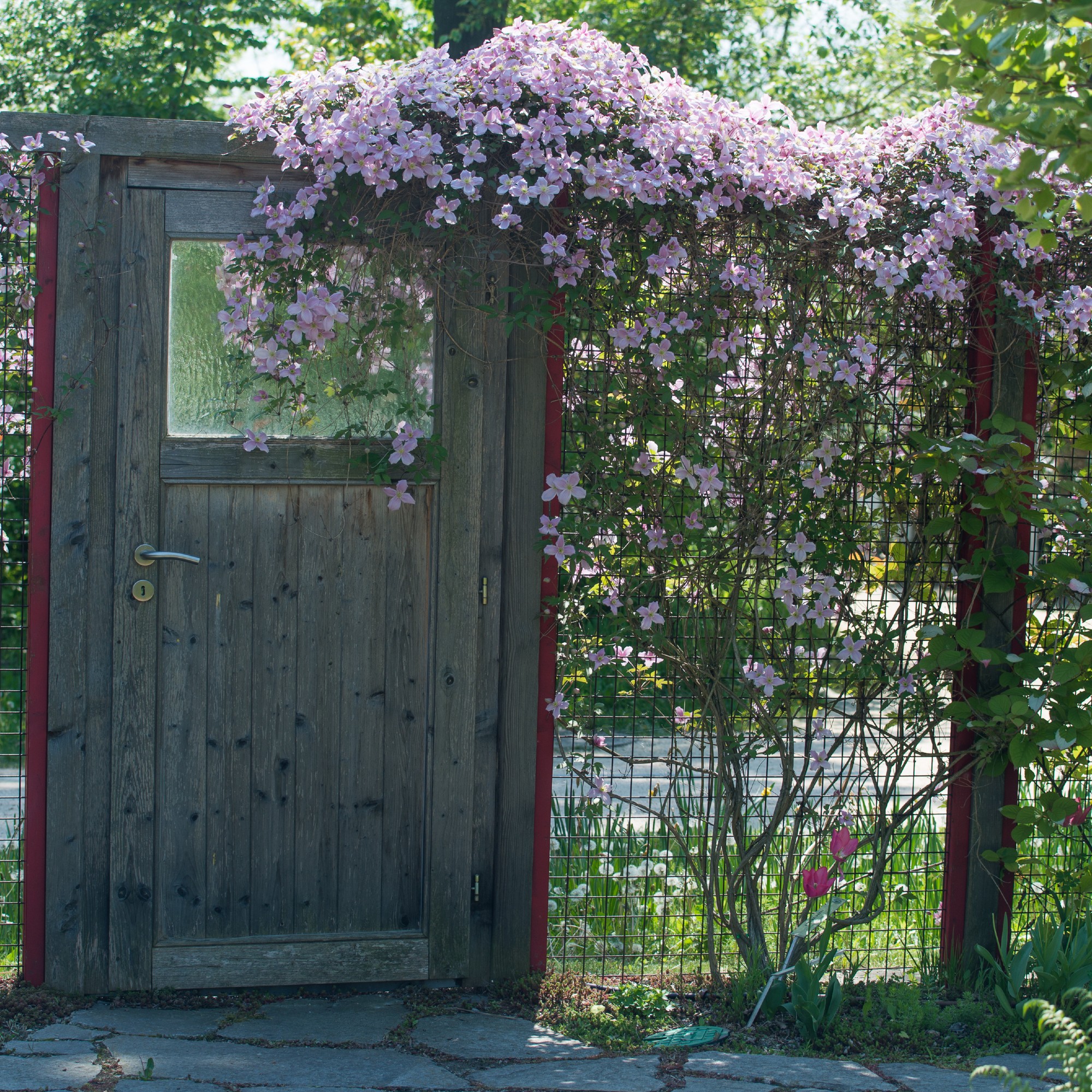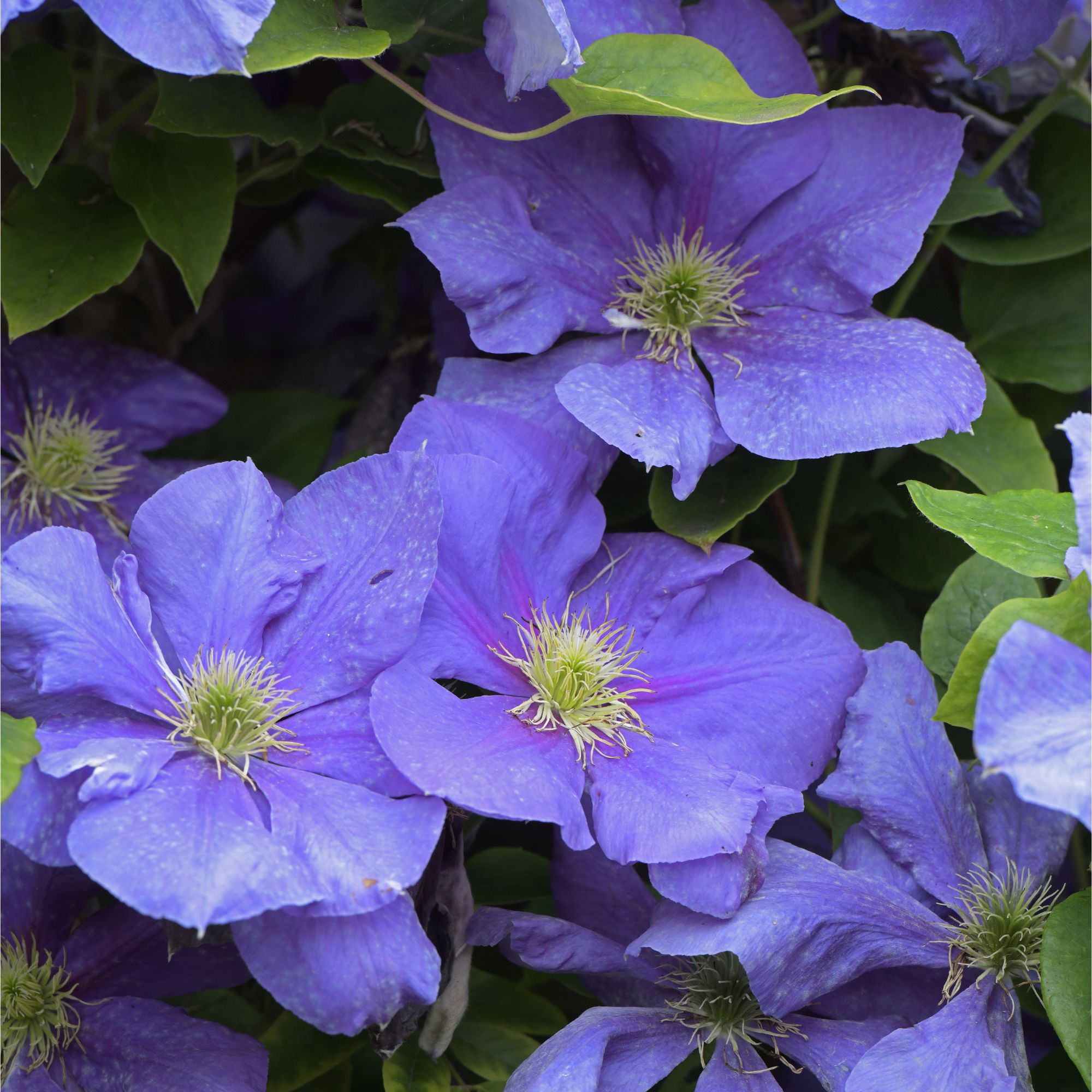How to revive a woody clematis plant – 3 steps to help your climbing plant to thrive again
If you're looking to rejuvenate an old clematis, you've come to the right place...


If you’ve left yours to its own devices, chances are you’re looking to learn how to revive a woody clematis plant. After all, it might be a seriously beautiful addition to any garden, but this incredibly fast-growing climbing plant has a habit of becoming tired and tangled over time, leaving you with more brittle brown stems than clouds of star-shaped blooms.
Ah, yes; part of the Ranunculaceae family, this easy climbing plant has a lot going for it (not least of all its perennial status), but it’s one of those pretty plants that needs some serious TLC if you want to keep it looking its best.
If you didn't get round to pruning your clematis or deadheading your clematis, though, don’t despair; there are still a few things you can do to get it looking its beautiful best again…

'Keeping a clematis plant thriving takes correct pruning, watering and overall care. So, if a clematis has become woody, this may mean it’s in need of better pruning or even a different position in the garden,' says Morris Hankinson, director of Hopes Grove Nurseries.
'If the clematis plant is diseased or dead, it will be time for a new one. If it is showing signs of life, though, then it can be revived,' he adds promisingly.
What you'll need
If you're hoping to revive a woody clematis plant, you will need the following tools to hand.
- A pair of sharp, clean secateurs – like these Niwaki GR Pro Garden Clippers from John Lewis
- A pair of gardening gloves (something like the Burgon & Ball Flora brite Nylon Pink Gardening gloves from B&Q will do nicely)
- Some Rootgrow; try The Range's Rootgrow Mycorrhizal Fungi
Once you have everything you need to revive a woody clematis plant, you can set to work in earnest. From timing your cut-back just right to feeding it back to full health, these expert tips will help restore your climbing beauty to its former glory.
Sign up to our newsletter for style inspiration, real homes, project and garden advice and shopping know-how
1. Check for signs of life
It should go without saying that a dead plant cannot be revived, no matter how talented you are with a pair of garden shears.
'To check the plant is still alive, scratch a small area on the stem to see if there is green underneath,' says Morris, who says that you should 'also check for new shoots which will mean it is still alive'.
'Check at the base as well, because the plant might die back but still be alive at the base,' he adds.

2. Start pruning
If it is alive, you can absolutely revive a woody clematis plant by giving it a generous prune, and encouraging fresh, green shoots from the base.
'Be sure to prune all dead, diseased or damaged stems to where you can see some healthy green wood or shoots low down, all the way towards the base if needed,' advises Morris.
'It’s important to use clean, sharp tools to avoid damage or the spread of disease.'
3. Show it some TLC
Learning how to revive a woody clematis plant isn't just knowing what you can remove from the plant; it's about knowing what to add, too.
'After the clematis has been cut back, add some RootGrow [like this one from The Range] around the base to help promote healthy growth and then mulch around the base with some well-rotted organic matter, without touching the stems,' says Morris.

'Be sure, too, to give the clematis a good water and keep well watered, especially during dry weather,' he adds.
FAQs
Why has my clematis gone woody?
If you're busy wondering why your clematis has gone woody, Christopher O'Donoghue of Gardens Revived says that there are three reasons to consider.
'Firstly, it could be down to a lack of pruning,' he says. 'Most clematis need regular pruning. If left unpruned, older stems become woody and bare at the base, with flowers only at the top.'

A gardener with over a decade of experience under his belt, Christopher set up Gardens Revived with his brother, Andrew, in 2018 to create a thriving family business. Together, they have worked on residential gardens, listed buildings and gardens, flower shows and large estates with some exceeding 70 acres – many with historical significance.
Christopher goes on to cite age as a common reasons, noting that, like many perennial climbers, clematis naturally develop thick, woody stems over time.
Finally, a woody clematis could have been caused by 'shaded or crowded conditions', as they 'can cause older growth to harden off and reduce flower production', he says.
How to rejuvenate an old clematis?
Learning how to rejuvenate an old clematis means that you will need to identify Its pruning group, as there are three main types:
- Group 1 (Spring-flowering): 'This one flowers on old wood, and needs a light prune after flowering,' says Gardens Revived's Christopher O'Donoghue.
- Group 2 (Early summer): 'This one flowers on old and new wood, so prune lightly in late winter or early spring,' he adds.
- Group 3 (Late summer/autumn): 'This one flowers on new wood, and needs a hard prune in February/March so its left sitting 30cm from the ground,' he advises. 'Be sure to water well and mulch with compost or leaf mould.'
'If you don’t know the group, observe when it flowers or play it safe by pruning in stages,' adds Christopher, noting that you should take care to 'apply a balanced fertiliser (like Growmore or Westland's fish, blood and bone from Amazon) in spring'.
'Mulch with well-rotted compost to improve soil and retain moisture, and take care to tie in new shoots to encourage a well-shaped, leafy structure from the base up,' finishes Christopher.
Can you move a clematis?
While you can move a clematis, Morris Hankinson of Hopes Grove Nurseries points out that you should take care to 'gently dig it up when dormant, disturbing the roots as little as possible and move to a moist but well-drained soil'.
'Be sure to leave it somewhere it's situated in shade at the root and sun on the stems with something to climb up,' he adds.
And just like that, you know how to revive a woody clematis plant – with a little patience, time, and TLC. Still, it's best to avoid the job altogether, so it may prove better to tend to your plant's needs a little more carefully in the future...

Kayleigh Dray became Ideal Home’s Acting Content Editor in the spring of 2023, and is very excited to get to work. She joins the team after a decade-long career working as a journalist and editor across a number of leading lifestyle brands, both in-house and as a freelancer.